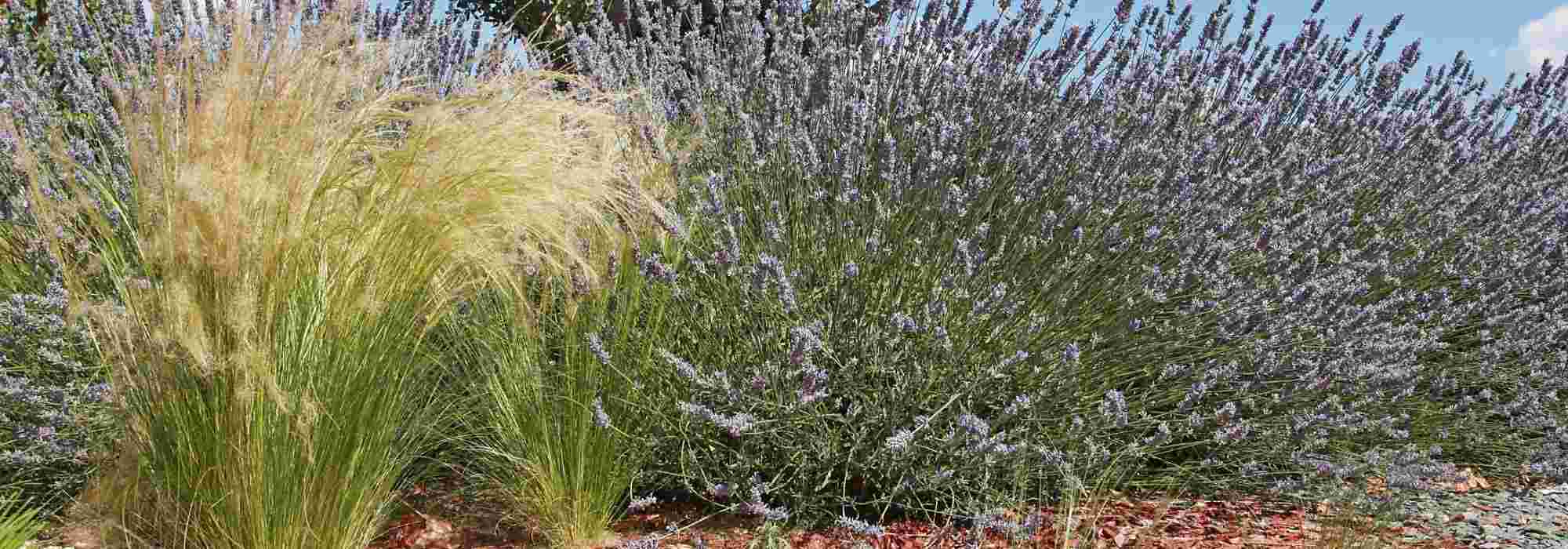
Designing a garden with minimal watering (or almost none)
Our tips for gardening while saving water
Contents
Designing a garden without watering may initially perplex some of us, as it often requires breaking old gardening habits. However, taking the plunge to approach the garden differently—forgetting the lush lawn, the opulent hedges trimmed to perfection each year, and the flower beds brimming with vibrant blooms—can be a challenge for many. Whether you are doing this to reduce your water bills, for ecological reasons, or to spare yourself tedious gardening weekends, you will need to consider various factors and, above all, accept a shift in your perception of the garden. Ultimately, nature always decides, and we must adapt to water restrictions to enjoy the garden without watering or, at the very least, significantly reduce our water needs!
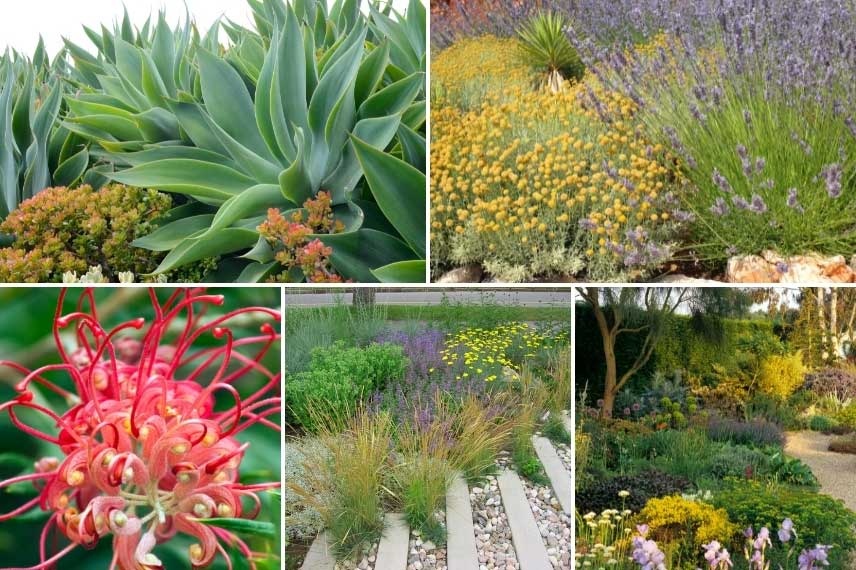
A garden without watering allows for the creation of beautiful atmospheres
Reimagine the garden
Becoming aware that water is a precious resource leads to rethinking the garden in contrast to the traditional view of green spaces. When discussing dry gardens, one often thinks of gardeners in Mediterranean climates, but nowadays, drought is frequently mentioned in Alsace, the Paris region, or along the Atlantic coast. One of the first observations is that lawns are increasingly becoming dry expanses from the beginning of summer. Let’s forget about watering these areas and choose between three options:
- let it grow to transform the sad square of lawn into a natural meadow, a habitat for numerous insects, birds, and small mammals. Simply take out the mower to create winding paths and let your children pick bouquets of wildflowers; it’s much more rewarding! You can mow when your lovely meadow has dried out at the end of summer or early autumn. To give nature a little boost, you can sow mixtures of flowering fallow seeds in autumn. There are selections special “dry ground” to see Nigella, wallflowers, flax flowers, etc., bloom.
- Another alternative is to remove the lawn to create a dry garden with gravel. This option requires more implementation work and involves a more radical rethinking of your garden. You will need to lay down a geotextile membrane and spread a mineral mulch of gravel on top. It is entirely possible to mix the two solutions to transform an area of the garden this way and then proceed in stages once you are convinced of the benefits of this style of garden, which is much easier to live with and requires far less maintenance.
- Finally, it is possible to replace the water-hungry grass with alternatives such as Achillea crithmifolia, Phyla or Lippia nodiflora, or even the Mascarenes lawn Zoysia tenuifolia. These groundcover plants are perfectly resistant to trampling and drought. Their spreading nature allows them to replace grassed areas, and they require much less maintenance due to their low natural height.
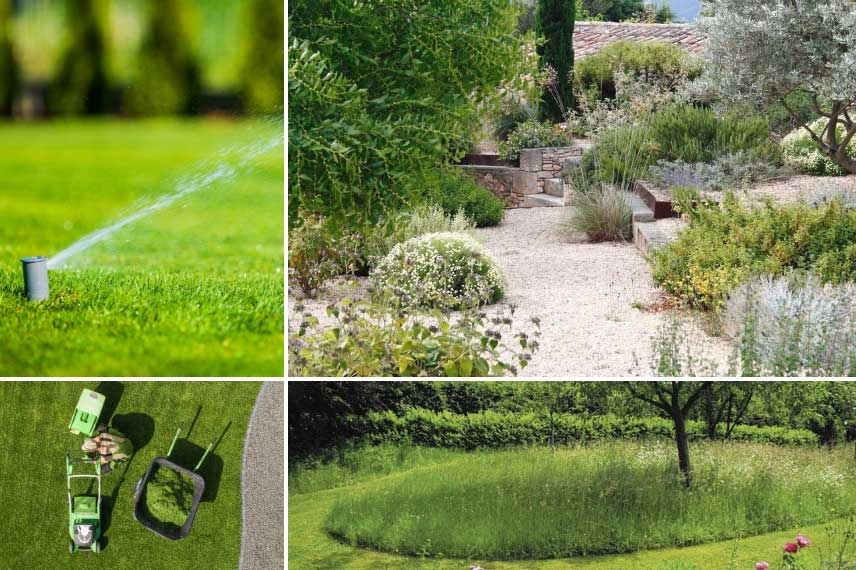 Forget watering and mowing lawns to adopt a dry garden with gravel and flowering fallows.
Forget watering and mowing lawns to adopt a dry garden with gravel and flowering fallows.
Soil preparation and drainage
Once the area or areas for planting in a garden without watering have been determined, the next step will be soil preparation. Start by loosening the planting areas with a broad fork to aerate the soil without turning it over. Then comes the drainage step, which is crucial for the proper development of plants in dry gardens. They are physiologically well adapted to water stress, but what can harm them is root asphyxiation. Your soil may be naturally draining, with the presence of pebbles and stones of all kinds; in this case, that’s great for you.
If, on the contrary, your garden soil is heavy and compact, it will need to be drained, or you risk seeing your plants struggle or even perish. You can achieve drainage by digging good planting holes that are well loosened in depth so that the roots can develop easily, and adding gravel or coarse sand mixed with soil at the bottom. Avoid very fine sand, as it will create a sort of concrete with the clay.
Another method is to create raised beds by adding topsoil. Rainwater will run off to concentrate below, resulting in natural drainage of the planted area. However, you must also ensure that the bottoms of the planting holes are well drained and loosened. Don’t be lazy during this step; your plants will reward you! The planting holes should be wide and deep. For a 2-litre container bush, plan for a hole at least 40cm wide and deep, along with a wide and deep watering basin.
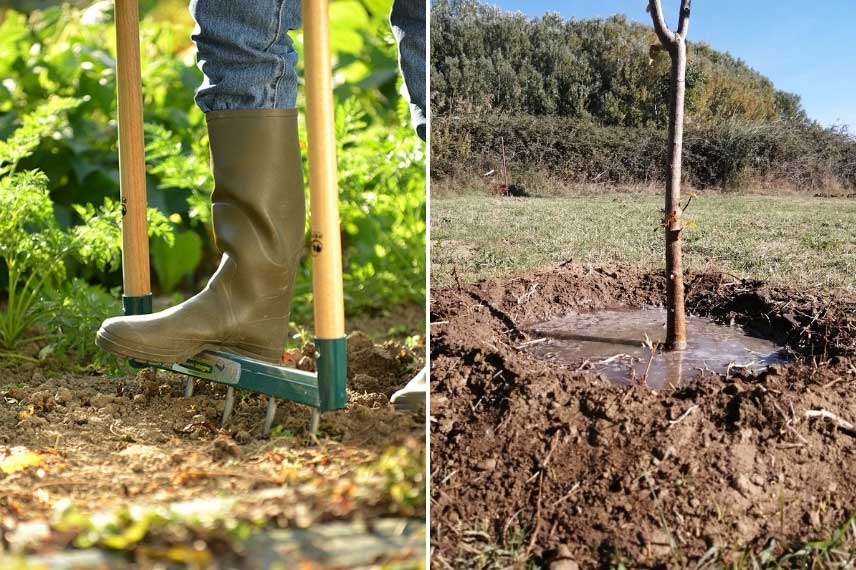
Aerating the soil with a broad fork and creating watering basins at the base of the plants
Choosing suitable plants
The plant palette you choose for your drought-resistant garden must obviously be suited to your local climate conditions. You should consider winter temperatures and wind conditions, as the Mistral and Tramontane winds exacerbate dryness and cold. It’s also important to take into account the alkalinity of the soil, as not all plants will necessarily thrive in calcareous or, conversely, acidic soil. Plants suited for a drought-resistant garden are those native to the Mediterranean basin, Chile, California, South Africa, Australia, and New Zealand, as these regions share similar climatic conditions. Their leaves are tough, fine, downy, or succulent, and beautiful combinations of their flowers are possible! The Plantfit app will help you easily select water-efficient plants suitable for your garden:
- Trees are your allies: they create shaded areas, slow down winds, and help create a microclimate where gardening becomes easier, even with drought as your ally. Holm oaks and cork oaks, the olive tree and Russian olive, strawberry trees, pines, cypresses, Albizzia, and Judas tree… Depending on your tastes and the size of your garden, many species are possible.
- Drought-resistant shrubs abound, from Viburnum tinus, countless varieties of oleander, Grevillea, and Callistemon, known as bottlebrushes, to myrtles… The taller ones create windbreaks and shade like trees, while others allow for the creation of sumptuous, low-water, and low-maintenance flower beds!
- In addition to flower beds, a multitude of perennials and ornamental grasses for dry soil, as well as spring bulbs and summer bulbs.
- Groundcovers can replace lawn areas to eliminate the need for watering and mowing. In flower beds, they can cover large areas that will remain green all year round and flower without a drop of water.
- Climbers act as natural air conditioners, as greening the walls of your home provides shade and coolness. Similarly, a closed garden, a patio, or a balcony that feels stifling in summer will become a pleasantly refreshed haven thanks to drought-resistant climbers.
- Finally, cacti and succulents are also essential for structuring a drought-resistant garden, their drought resistance being sometimes simply miraculous.
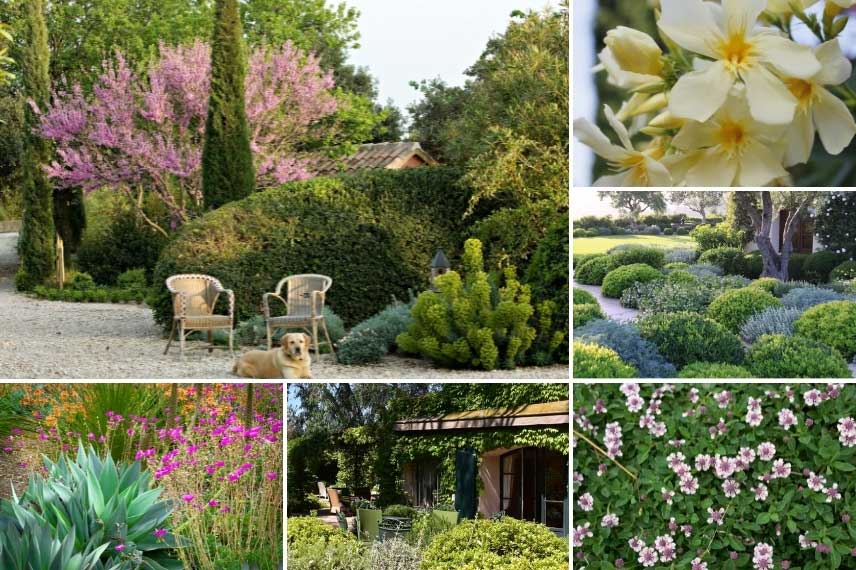
Clockwise: Judas tree in bloom and cypress in a Mediterranean garden, oleander flowers, perennials and small drought-resistant shrubs, the groundcover Lippia nodiflora, climbers on a facade in the South, and agaves.
Read also
7 drought-resistant climbing plantsPlanting small
Don’t choose plants as you would select decorative objects for your home: a magnificent and imposing bush or perennial will have very little chance of establishing itself well in a drought-prone garden. A rule applies: plant small! Between a 5-litre pot of lavender and a young plant, opt for the young plant. Of course, it may be less appealing at the time of purchase. However, it has two significant advantages: it will cost you considerably less and have a much better chance of survival! In any case, the ideal is to carry out some pruning of the plants at the time of planting for better establishment.

Opt for small plants for better establishment in dry soil
Plant at the right time
Everyone knows the saying: “At Saint Catherine’s, all wood takes root.” Planting in autumn in regions prone to drought ensures much better establishment for your young plants. Wait for the first good autumn rains to take advantage of the natural moisture in the soil and get your spade out! Most plants will be in a dormant state during winter and can quietly start to take root, benefiting from cooler temperatures and rainwater. The first warmth will arrive a few months later when they are ready to face it. In contrast, with spring plantings, your plants will have to fight on all fronts at once: producing roots, leaves, shoots, and flowers while also resisting the heat! This reduces their chances of survival, and you will need to water more to prevent losing them.
Plant in the right place
Not all plants have the same requirements in terms of soil, drought resistance, or hardiness. Research these requirements before composing your displays to group plants with similar needs. Agaves, opuntias, lavenders, helichrysums, gauras, phlomis tolerate drought and poor soils very well? Group them together! The Cassia floribunda, Diosma, and Galvezia speciosa are more sensitive to cold? Group them in a sheltered spot away from prevailing winds and ensure good drainage. The Leptospermum scoparium, lavender stoechas, and cistus ladanifer need acidic soil? Again, associate them in your displays. By doing so, you will make your life easier and give your plants every chance to thrive beautifully!
Well managing watering
Planting in a garden without watering… still requires some watering, at least for the first two years.
- First, consider creating watering basins at the base of each planted subject. This way, the watering will remain concentrated at the base rather than running off around it without any beneficial effect. These waterings should be substantial but spaced out. The goal is to encourage deep rooting, which will not happen if you only moisten the soil in the top 2 or 3 centimetres. The root system will focus on the surface, where the soil will dry out immediately with the first heat.
- Water generously at planting; if necessary, do not hesitate to soak the root balls beforehand if they are too dehydrated. Make a basin that is large in relation to your plants. Again, this is not about decoration but about facilitating the establishment of a living being that may last for decades! The visual aspect is not important at this stage; the basin should be able to hold at least 20 litres of water for a bush in one go. If you are planting small plants quite densely, such as groundcovers or perennials, feel free to create a “collective” basin for several plants. In case of a slope, remember to raise the edge of the basin on the lower side; otherwise, the water will overflow and be wasted.
- Then, water at least 20 litres every 3 weeks. If water stress is too evident on a plant, adjust by watering a bit earlier: this frequency is a guideline and should be modified based on temperature, your type of soil, and the plants you have planted. Nevertheless, it is during periods of drought stress that the plant will develop its root system deeply to become more autonomous, so do not panic!
- Maintain this watering frequency for the first two years, especially in summer, unless rainfall is scarce in autumn or if the wind tends to increase drying. Remember that young plants can also die of thirst in winter. If you have chosen suitable plants, they will no longer need assistance afterwards, and you can enjoy your garden without the tedious chore of watering!
Mulch
Mulching involves covering the soil between plants. Especially during the first two years, do not place the mulch too close to the plants to avoid rotting of the collar. Mulching has several functions:
- Maintaining soil moisture
- Allowing the development of soil life
- Preventing the growth of unwanted herbs
Organic mulches can include various barks and pales sold commercially (cocoa, flax, hemp…) or simply the pruning waste from your garden, if possible shredded. For it to be effective, this mulch should be 8 to 10 cm thick. For a more “neat” appearance – best reserved for areas around the home – you can opt for mineral mulch: gravel, pumice, pebbles… Suppliers offer a multitude of materials that you can choose according to your tastes… and your budget! Dense planting also provides a sort of natural mulch: when your plants are well-developed, the soil should no longer be bare. The plants will protect each other, and the adventives that could compete for water absorption will find it much harder to thrive.
 Organic mulch made from shredded plants and mineral mulch with gravel
Organic mulch made from shredded plants and mineral mulch with gravel
- Subscribe!
- Contents
































Comments